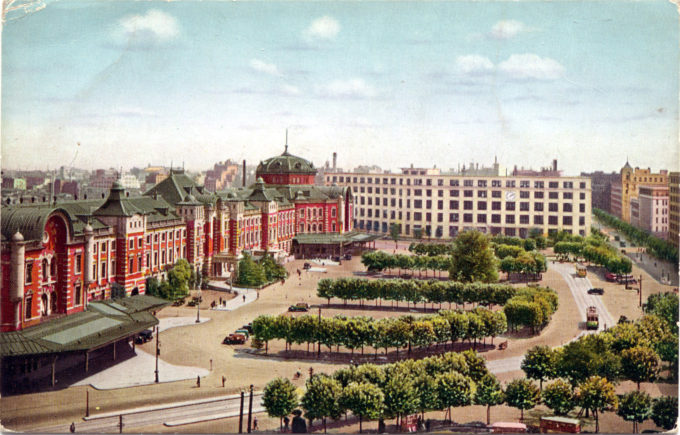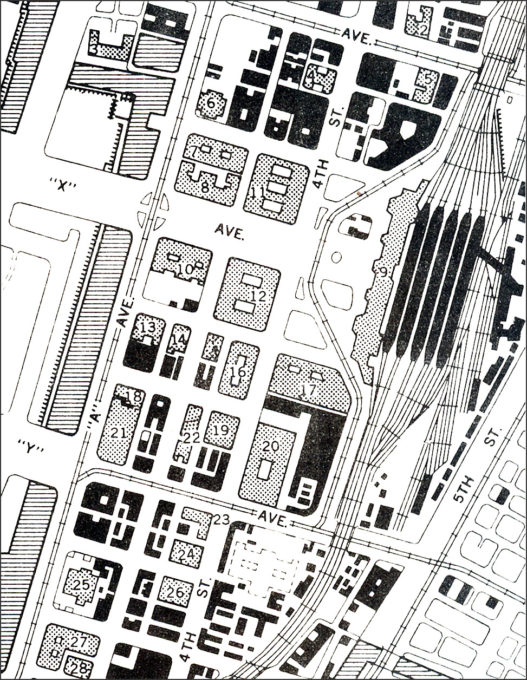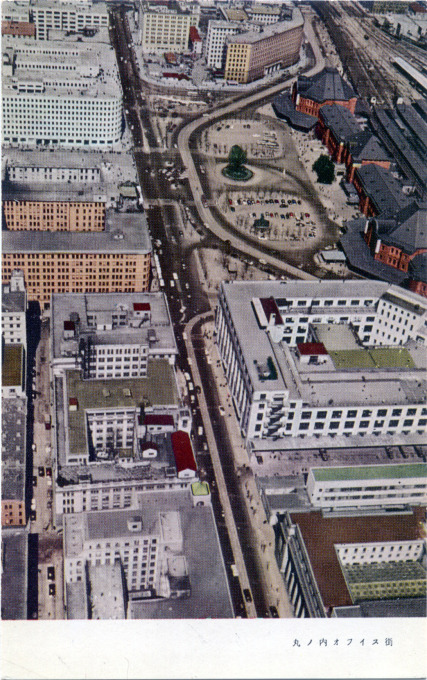
The Central Post Office across the plaza from Tokyo Central Station (left), soon after completion of the post office in 1933. Japan’s first ‘subway’ had been completed in 1917 in the earlier structure on the same site, to move mail and packages underground back-and-forth between the station terminal and the Central Post Office across the street, and was incorporated into the new building.
See also:
Central Post Office, Tokyo, c. 1935.
Tokyo Station, c. 1914-1940
Marunouchi Building
“In contrast to embracing discredited Nationalist doctrines, the 1930s also saw other major economies applying an industrial rationalism. A number of architects had trained under Walter Gropius preparing reconstruction in the International Style.
“Some courageous designers aspired to greater objectivity and functionalism as displayed in the Cartesian form of the Tokyo Central Post Office, completed [in 1931] to a design by Tatsuro Yoshida (1894-1956) opposite Tatsuno’s Tokyo Station. The new public utilities and communication service defiantly promoted a resplendent image of efficiency and it was here, combining functionalism with post and beam construction, where modern Japanese architecture was briefly accomplished.
“In 1933 the leading architect Bruno Taut … declared that ‘the architecture of Japan is the architecture of the future.’ Such buildings as the new Tokyo post offices and primary schools, praised by Taut as ‘the most modern in the world,’ should be seen in the context of the untimely curtailment of the German modern movement following the rise of the National Socialist party.”
– Project Japan: Architecture and Art Media Edo to Now, by Graham Cooper, 2009
- Map: Tokyo Central Station and the Marunouchi business district, c. 1952. The Central Post Office (#17) is located across from the south terminal exit.
- Aerial view of Tokyo Station, c. 1960, from over the Marunouchi business district. At lower-right is the Central Post Office.
See also: Historic post offices face the wrecking ball, Japan Times, November 20, 2007
Note: Tokyo Central Post Office reopened on July 17, 2012, after renovation work that sought to preserve the original interior material to the furthest extent possible. Major architectural features such as the octagonal pillar and the black marble walls were once removed to repair the framework, and then returned to their initial positions. Lost lighting fixtures, black mosaic tiles on the floor, mortar on the ceiling and walls, and parts of the counters were also redeveloped to restore the original designs.



